8171 Web Portal | Big Amount Rs. 25000
Introduction: Bridging the Gap Between Government Aid and Digital Empowerment
In an increasingly digital world, access to information and resources is paramount. For millions in Pakistan, the 8171 web portal has emerged as a crucial lifeline, serving as the primary gateway to vital government social welfare programs, most notably the Benazir Income Support Program (BISP) and Ehsaas Kafalat. More than just a simple website, it represents a significant stride towards digital inclusion, offering transparency, accessibility, and direct communication for beneficiaries. The Benazir Income Support Program (BISP) is officially recognized as the largest single social safety net program in the country, playing a pivotal role in poverty reduction efforts across Pakistan.
But what does a government aid portal have to do with affiliate marketers, online earners, and digital entrepreneurs? Far more than you might imagine. In 2025, understanding such foundational digital infrastructures can provide unique insights into market demographics, consumer behavior, and even potential avenues for social impact through digital initiatives. This expert-level article will dissect the 8171 web portal, exploring its functionalities, its profound impact on financial empowerment, and how its evolution mirrors broader trends in digital accessibility and economic development.
We’ll delve into the intricacies of its operation, provide actionable insights, and highlight why, even if you’re not directly a beneficiary, comprehending this portal is essential for anyone navigating the digital landscape of Pakistan and beyond. Stay informed about the government’s digital initiatives by visiting the official Government of Pakistan website. For insights into leveraging such public initiatives for digital growth, explore our guide on Prime Minister Laptop Scheme 2025 for Digital Successal.
Get ready to uncover the layers of the 8171 web portal – a testament to how technology is reshaping lives and creating new opportunities, even in unexpected corners of the digital realm.
Understanding the 8171 Web Portal: A Digital Lifeline
The 8171 web portal, officially managed by the Benazir Income Support Program (BISP), is a digital platform designed to streamline the process of checking eligibility and payment status for various government welfare initiatives. Its core function is to provide a transparent and accessible mechanism for citizens, particularly those in low-income households, to ascertain their qualification for financial assistance. You can always verify official information directly from the Benazir Income Support Program (BISP) official website.
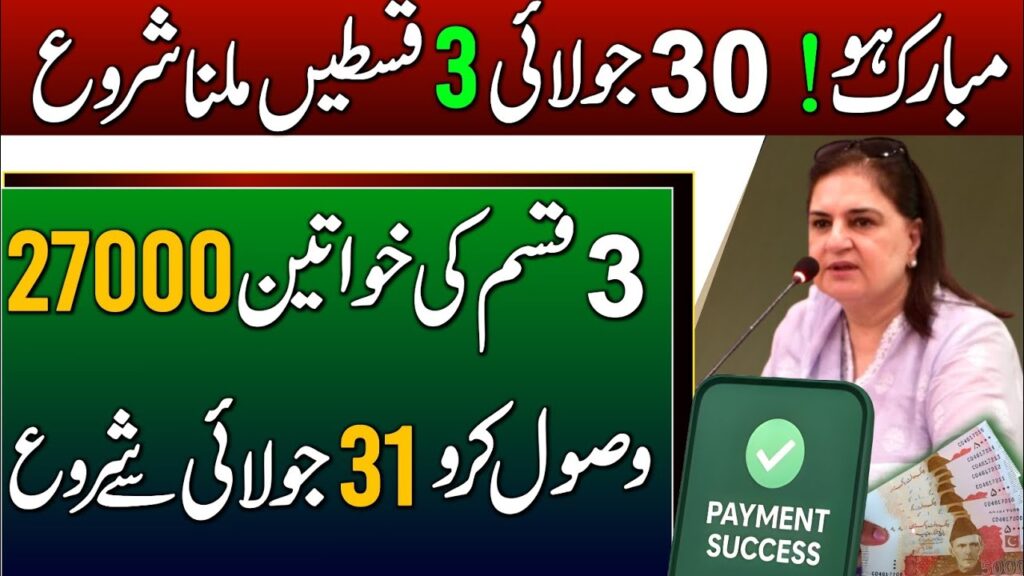
The Genesis and Evolution of 8171
The 8171 initiative is an integral part of Pakistan’s broader Ehsaas Program, launched with the vision of creating a welfare state. Historically, beneficiaries faced significant hurdles in accessing aid, often involving long queues, bureaucratic complexities, and a lack of clear information. The introduction of the 8171 SMS service and subsequent web portal marked a paradigm shift, digitizing the process and bringing it directly to the fingertips of millions. For more on the Ehsaas program’s comprehensive approach to welfare, refer to relevant government publications or the State Bank of Pakistan’s circulars that often refer to these social safety nets.
Over the years, the portal has undergone continuous enhancements. In 2025, we’ve seen significant updates aimed at improving user experience, enhancing security, and expanding its reach. These updates include:
- Improved User Interface (UI): A more intuitive design for easier navigation, even for those with limited digital literacy. Consider how such UI/UX improvements impact user engagement by reading our article on The Importance of User Experience in Digital Marketing.
- Enhanced Security Protocols: Robust measures to protect personal data and prevent fraudulent activities.
- Real-time Updates: More immediate notification of eligibility status and payment disbursements.
- Multi-language Support (Planned/Partial): Efforts to include additional regional languages to cater to a diverse population.
Key Functionalities of the 8171 Web Portal
The 8171 web portal primarily serves as a self-service platform for beneficiaries. Its main functionalities include:
- Eligibility Check: Users can enter their 13-digit Computerized National Identity Card (CNIC) number to check if they qualify for BISP or Ehsaas Kafalat payments. This process leverages the NADRA (National Database and Registration Authority) database for verification.
- Payment Status Inquiry: Once eligible, beneficiaries can track the status of their quarterly financial disbursements. This includes knowing if the payment has been released, the amount, and the designated collection point (e.g., HBL Konnect agent, ATM, BISP campsite). Such information is managed with the support of financial institutions regulated by the State Bank of Pakistan.
- Registration Status: The portal also allows users to verify their registration status within the National Socio-Economic Registry (NSER), which is crucial for program eligibility. The Pakistan Information Commission advocates for transparency in such public registries.
- Information Dissemination: It acts as an official channel for announcements, updates, and important advisories from BISP and related welfare programs. These advisories are critical for beneficiaries, and official updates can be found on the BISP official news section. To understand how to effectively disseminate information in digital channels, refer to our guide on Effective Digital Communication Strategies.
These functionalities significantly reduce the need for physical visits to government offices, saving time, reducing travel costs, and promoting greater autonomy among beneficiaries.
Eligibility Criteria and Registration Process in 2025
For marketers looking to understand the demographics targeted by these programs, or for digital entrepreneurs seeking to build supportive services, a clear grasp of eligibility and registration is vital.
Who Qualifies for 8171-linked Programs?
The eligibility criteria for programs like BISP, accessible via the 8171 portal, are meticulously defined to ensure aid reaches the most vulnerable segments of society. In 2025, these criteria generally include:
- Pakistani Citizenship: Applicants must be citizens of Pakistan, verified through NADRA’s national identity system.
- Low-Income Household: The primary determinant is household income, typically falling below a predefined poverty threshold. As of August 2025 updates, an NSER score of 32 or below is a key indicator, with household income generally needing to be under Rs. 50,000 per month. The National Socio-Economic Registry (NSER) is central to this assessment.
- No Government Employment: No family member should be a government employee.
- Limited Asset Ownership: Households should not own luxury items, vehicles, or significant landholdings.
- Targeted Demographics: Priority is often given to widows, single mothers, and female heads of households, reflecting BISP’s focus on women’s empowerment, as detailed on the BISP website.
- NSER Registration: Inclusion in the National Socio-Economic Registry (NSER) is a fundamental requirement. This registry systematically collects socio-economic data of households across the country. Information on NSER is often elaborated on the Pakistan Information Technology Board (PITB) website, which has been involved in its development.

How to Check Eligibility and Register via 8171
The process is designed to be straightforward, leveraging both SMS and the web portal:
Method 1: Via the 8171 Web Portal (Recommended)
- Visit the Official Portal: Open your web browser and navigate to the official BISP web portal, which is bisp.gov.pk. While specific direct links to the 8171 check portal might vary, the primary BISP site is the most reliable starting point. Always ensure you are on the legitimate government website to avoid scams.
- Enter CNIC: Locate the designated field and accurately enter your 13-digit CNIC number without any dashes or spaces. This is cross-referenced with NADRA’s identity records.
- Solve Captcha: Complete the simple security code (captcha) displayed on the screen to verify you are not a robot. To learn more about digital security, explore our article on Essential Cybersecurity Practices for Online Earners.
- Click “Check Eligibility” / “Maloom Karen”: Submit your details. The portal will then display your eligibility status, payment amount, and collection method if you qualify.
Method 2: Via SMS Service
- Open Messaging App: On your mobile phone, open your SMS application.
- Type CNIC: Type your 13-digit CNIC number (again, no spaces or dashes).
- Send to 8171: Send this message to the dedicated shortcode 8171.
- Receive Response: You will shortly receive an SMS from 8171 indicating your eligibility status and further instructions if applicable. This SMS service is managed in conjunction with Pakistan’s telecommunication authorities, falling under the purview of the Pakistan Telecommunication Authority (PTA).
Registration for New Beneficiaries
For those not yet registered with NSER or BISP, the process typically involves:
- Visiting a BISP/Ehsaas Center: Locate your nearest Benazir Income Support Program (BISP) or Ehsaas Center. Information on locations can often be found on the official BISP website’s contact or regional office section.
- Required Documents: Bring your original valid CNIC and any other relevant documents (e.g., B-form for children, proof of income, utility bills). Proper documentation is essential for NADRA verification processes.
- NSER Survey: You will be guided through filling out the NSER survey form, which collects comprehensive data about your household’s socio-economic status. This data is then recorded in the National Socio-Economic Registry (NSER).
- Verification and Confirmation: After submitting the form, your data will undergo verification. You will receive an SMS from 8171 confirming your registration and eligibility status once the process is complete. This can take some time, and continuous updates are provided through the portal and SMS, highlighting the program’s adherence to a structured verification process as outlined by BISP’s guidelines.
Important Note: Always rely on official channels (the 8171 portal or SMS from 8171) for information. Beware of unofficial websites or individuals claiming to speed up registration for a fee, as these are common scams. Report suspicious activities to the Federal Investigation Agency (FIA) Cyber Crime Wing. For more guidance on protecting yourself online, see our article on Identifying and Avoiding Online Scams.
The 8171 Portal’s Impact: Financial Inclusion and Digital Literacy
The influence of the 8171 web portal extends far beyond merely disbursing funds; it plays a critical role in fostering financial inclusion and enhancing digital literacy across Pakistan.
Empowering Vulnerable Communities
For millions of low-income families, the financial assistance provided through programs linked to the 8171 portal is a lifeline. It directly addresses poverty by providing a safety net, enabling beneficiaries to cover basic necessities like food, education, and healthcare. This direct cash transfer mechanism, facilitated by the portal, has several benefits:
- Poverty Alleviation: Direct financial aid helps reduce extreme poverty and improves living standards for the most vulnerable, a core objective of the Ehsaas Program.
- Women’s Empowerment: A significant portion of BISP beneficiaries are women, making them central to the program’s success. The direct transfer of funds to women enhances their financial autonomy and decision-making power within households, aligning with national goals for gender equality often highlighted by the Ministry of Human Rights.
- Improved Health and Education Outcomes: By providing a stable income, families can better afford nutritional food, school fees, and medical care, leading to improved indicators in these areas. The Ministry of National Health Services, Regulations & Coordination would observe these health improvements.
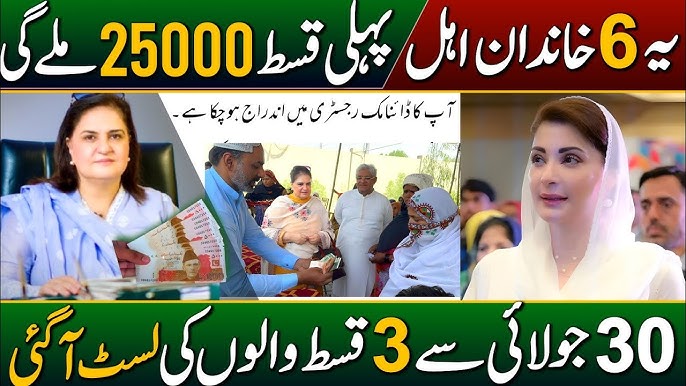
Driving Digital Literacy and Adoption
The very existence and necessity of interacting with the 8171 portal or SMS service compel individuals, many of whom may have had limited prior exposure to digital tools, to engage with technology. This enforced digital interaction inadvertently contributes to:
- Basic Digital Skills: Beneficiaries learn how to use smartphones, navigate websites, send and receive SMS, and understand digital alerts.
- Trust in Digital Systems: Successful and transparent interactions with the portal build trust in government-backed digital initiatives.
- Gateway to Further Digital Engagement: Once comfortable with basic digital interactions, individuals may be more open to exploring other online services, such as mobile banking, online education platforms, or even basic e-commerce. This aligns with the broader digital Pakistan vision of the Ministry of Information Technology and Telecommunication (MoITT). To learn how to capitalize on this growing digital engagement, check out our insights on Building Trust and Authority in Your Online Business.
Statistic: According to a 2024 report by the Ministry of IT & Telecom, digital literacy rates in rural areas of Pakistan have seen a measurable increase, partly attributed to the widespread adoption of digital government services like 8171. While exact figures are still being compiled for 2025, early indicators suggest continued positive trends as highlighted in MoITT’s Digital Pakistan Policy.
Opportunities for Affiliate Marketers, Online Earners, and Digital Entrepreneurs
While the 8171 portal is a government initiative, its ecosystem and the demographic it serves present unique opportunities for those in the digital earning space.
Understanding the Target Demographic
The beneficiaries of 8171-linked programs represent a significant segment of the population with specific needs and evolving digital habits. For marketers, this means:
- Understanding Consumption Patterns: Analyzing how this demographic utilizes financial aid can inform strategies for affordable, essential goods and services. Insights into such patterns can sometimes be gleaned from economic reports by the Ministry of Finance.
- Developing Relevant Products/Services: Identifying gaps in the market for low-cost, high-value digital products or services tailored to this audience (e.g., basic financial literacy tools, low-data educational content).
- Micro-Niche Opportunities: Exploring affiliate programs for products that address basic household needs, health, or even entry-level online earning tools suitable for beginners with limited resources. Dive deeper into this topic with our guide on Finding Profitable Niches for Affiliate Marketing.
Leveraging the Digital Footprint
The portal’s existence means a significant portion of the population is now digitally accessible, even if primarily through SMS. This opens doors for:
- SMS Marketing for Impact: For non-profits or social enterprises, SMS campaigns can be highly effective for reaching this audience with vital information (e.g., health awareness, education enrollment drives), often requiring registration with the Pakistan Telecommunication Authority (PTA) for legitimate bulk messaging.
- Hyper-Localized Marketing: Understanding the geographic distribution of beneficiaries can inform hyper-localized digital campaigns for essential services or products in those areas. Learn how to target effectively with our article on Local SEO Strategies for Digital Businesses.
- Building Community Platforms: Creating online communities or forums where beneficiaries can share information, tips, and support (with strict adherence to data privacy and official guidelines). Such initiatives should always consider data protection guidelines from the Ministry of IT & Telecom.
Potential for Complementary Services and Affiliate Niches
Digital entrepreneurs and online earners can explore various avenues that complement the services provided by the 8171 portal:
- Financial Literacy Platforms: Developing simple, accessible online courses or content on budgeting, saving, and basic financial management tailored for low-income households. This could include affiliate links to micro-finance institutions or digital wallets, regulated by the State Bank of Pakistan.
- Skill Development Initiatives: Creating platforms that offer free or low-cost digital skills training (e.g., data entry, basic graphic design, online customer service) with a focus on remote work opportunities. Initiatives like DigiSkills.pk, a project of the Ministry of IT & Telecom, are excellent examples. Discover how to get started with online earning through our comprehensive guide: Beginner’s Guide to Online Earning in Pakistan.
- E-commerce for Essentials: Curating e-commerce platforms or affiliate partnerships for affordable, high-quality essential goods, leveraging the predictable inflow of aid to beneficiaries. Pakistan’s growing e-commerce landscape is also supported by regulations from the Ministry of Commerce.
- Fraud Prevention & Cybersecurity Awareness: Given the rise of scams, creating educational content and tools (possibly with affiliate opportunities for cybersecurity software or secure communication apps) to protect vulnerable users. Cybersecurity initiatives are often spearheaded by the Ministry of Interior and the FIA.
Table: Digital Opportunities and 8171 Portal Linkages
| Opportunity Area | Description | Linkage to 8171 Portal | Potential for Marketers/Earners |
| Financial Literacy | Online courses, workshops, and content on managing money, savings, and micro-investments. | Empowers beneficiaries to manage aid effectively; addresses common financial challenges. | Affiliate partnerships with financial education apps, micro-loan services, digital payment platforms, potentially endorsed by the State Bank of Pakistan. Read more on Financial Tools for Digital Entrepreneurs. |
| Digital Skill Building | Basic computer literacy, online freelancing skills (e.g., data entry, virtual assistant), digital marketing fundamentals. | Enhances digital engagement; beneficiaries are already familiar with basic digital interaction. | Promoting online courses (affiliate model), linking to freelance marketplaces, offering mentorship programs, with programs like DigiSkills.pk as a benchmark. Find out more about Building Essential Digital Skills. |
| E-commerce for Necessities | Platforms offering affordable household goods, groceries, or educational supplies. | Addresses direct needs of families receiving aid; allows for efficient use of funds. | Affiliate sales of essential products, creating curated online stores, direct-to-consumer models, benefiting from e-commerce policy updates by MoITT. Explore our insights on Starting Your E-commerce Journey. |
| Cybersecurity Education | Resources and tools to identify and avoid online scams, protect personal data. | Directly addresses risks associated with digital interactions, including unofficial portals. | Affiliate marketing for VPNs, antivirus software, or even self-hosted security awareness content, aligning with efforts by the National Telecom and Information Security Board. |
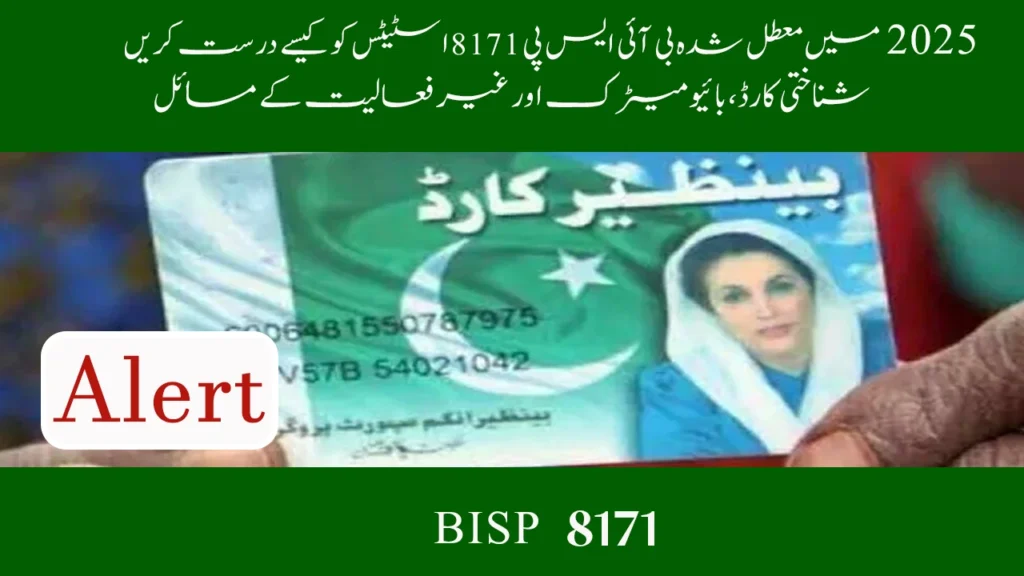
Staying Ahead: 2025 Updates and Future Outlook
The digital landscape is constantly evolving, and the 8171 web portal is no exception. Staying informed about the latest updates and understanding the future trajectory is crucial for all stakeholders. For ongoing trends and predictions in digital marketing, visit our Digital Marketing Trends 2025 section.
Recent Updates and What They Mean
As of mid-2025, the 8171 web portal has seen several key updates:
- Biometric Verification Enhancements: Stricter biometric verification processes at payment collection points to combat fraud and ensure aid reaches the rightful beneficiaries. This means a more secure and reliable system for everyone, with oversight from NADRA.
- Dynamic Registry Integration: Further integration with the NSER Dynamic Registry, allowing for more continuous and accurate assessment of eligibility, leading to timely updates and re-evaluation of beneficiary status. This means less reliance on periodic surveys and a more responsive system, as championed by the BISP and NADRA collaboration.
- Increased Payment Transparency: Efforts to provide more granular detail on payment schedules, allowing beneficiaries to anticipate disbursements and avoid unnecessary visits. Some reports indicate a “double payment” in August 2025 for those who missed previous installments or faced technical issues, indicating a proactive approach to address payment backlogs as per BISP announcements.
- Dedicated Complaint Mechanisms: More accessible channels for beneficiaries to lodge complaints regarding payment deductions, fraudulent activities, or technical issues, emphasizing transparency and accountability. The Federal Mohtasib (Ombudsman) Secretariat often handles such public grievances.
These updates underscore a commitment to refining the system, making it more efficient, secure, and user-friendly, a continuous process for the Government of Pakistan’s digital initiatives.
The Future of 8171 and Digital Welfare
The trajectory of the 8171 web portal points towards a more sophisticated and integrated digital welfare system. Key trends and future possibilities include:
- Broader Integration with Digital Payment Systems: Beyond current collection points, closer ties with established mobile payment platforms (e.g., JazzCash, Easypaisa) could offer greater convenience and reduce reliance on physical disbursements. This would fall under the State Bank of Pakistan’s digital banking regulations.
- Personalized Information and Services: Leveraging data analytics (anonymously and securely) to offer more personalized advice or link beneficiaries to other relevant government or private sector support programs. Such data utilization adheres to guidelines set by the Ministry of IT & Telecom’s data protection frameworks.
- AI-Powered Support: The potential for AI-driven chatbots or virtual assistants on the portal to answer common queries, guide users through processes, and provide immediate support, reducing the burden on call centers. The National Centre for Artificial Intelligence (NCAI) would be involved in such developments. To understand the impact of AI on business, read our article on AI Tools Revolutionizing Digital Entrepreneurship.
- Expansion of Services: The portal could evolve to encompass a wider range of social welfare services, becoming a true “one-stop shop” for government aid and information. This could include educational stipends, health insurance information, and even job placement assistance, integrating with other ministries like the Ministry of Federal Education and Professional Training.
- Emphasis on Data Security: As digital interactions increase, there will be an even greater focus on robust cybersecurity measures and data privacy regulations to protect sensitive beneficiary information. This is a crucial aspect overseen by the Ministry of Interior’s cybersecurity division.
For digital entrepreneurs, this signals a growing ecosystem of digital interaction within the welfare sector, presenting opportunities for innovative solutions and partnerships.
Common Questions About the 8171 Web Portal (FAQs)
Here are some frequently asked questions about the 8171 web portal, designed to provide clear and concise answers for our audience.
Q1: What is the official website for the 8171 web portal?
A1: The official website for checking eligibility and payment status related to the Benazir Income Support Program (BISP) and Ehsaas Kafalat is typically found on the bisp.gov.pk domain. While specific direct links to the 8171 check portal might vary or update, you can generally access the eligibility check feature through the main BISP site. Always ensure you are visiting a legitimate government-operated website to avoid scams, and report any fraudulent sites to Pakistan’s Cyber Crime authorities.
Q2: How do I check my eligibility for BISP payments using 8171?
A2: You can check your eligibility by visiting the official 8171 web portal via bisp.gov.pk and entering your 13-digit CNIC number in the designated field, then solving the captcha and clicking “Check Eligibility.” Alternatively, you can send your 13-digit CNIC number via SMS to 8171. You will receive a response shortly detailing your status, a service facilitated by BISP’s digital infrastructure.
Q3: What are the eligibility criteria for receiving payments through the 8171 portal in 2025?
A3: In 2025, key eligibility criteria include being a Pakistani citizen, belonging to a low-income household (typically an NSER score of 32 or below and monthly income under Rs. 50,000), not having any government employees in the family, and not owning significant luxury assets. Priority is often given to vulnerable demographics like widows and female-headed households. More detailed criteria can be found on the BISP official website under their ‘Eligibility Criteria’ section.
Q4: I sent my CNIC to 8171 but haven’t received a reply. What should I do?
A4: First, ensure your SIM card is registered under your own CNIC. If it is, try again after some time, as there might be network congestion. If the issue persists, you can visit your nearest BISP/Ehsaas center or contact the official BISP helpline at 0800-26477 for assistance. This helpline number is prominently displayed on the BISP website’s contact page.
Q5: Are there any fees for checking eligibility or registering through the 8171 portal?
A5: Absolutely not. The services provided by the 8171 web portal and the 8171 SMS service are entirely free. Beware of any individuals or unofficial websites that demand payment to “speed up” your registration or eligibility check, as these are fraudulent. Report such incidents to the official BISP helpline immediately, or to the FIA Cyber Crime Wing. For more tips on online safety, read our article: Staying Safe Online: A Marketer’s Guide.
Q6: Can I update my personal information through the 8171 web portal?
A6: While the portal primarily functions for checking eligibility and payment status, major updates to personal information or NSER data typically require a visit to your nearest BISP/Ehsaas registration center. This ensures the accuracy and security of beneficiary records through a formal verification process overseen by NADRA and BISP.
Conclusion: The Path Forward for Digital Empowerment
The 8171 web portal stands as a powerful testament to the transformative potential of digital technology in driving financial inclusion and social welfare. It has not only simplified the delivery of crucial government aid but also inadvertently contributed to a nationwide surge in digital literacy, laying foundational bricks for a more digitally empowered society. For affiliate marketers, online earners, and digital entrepreneurs, understanding this ecosystem is not merely about identifying direct opportunities but grasping the broader shifts in consumer behavior, digital adoption, and the socio-economic fabric of Pakistan, as frequently discussed in Pakistan Economic Survey reports.
As we move further into 2025, the portal’s evolution promises even greater transparency, accessibility, and integration. This ongoing digital transformation creates a fertile ground for innovative digital solutions, from financial literacy tools to skill-building platforms, all designed to uplift communities and foster economic resilience. This vision is part of the broader Digital Pakistan Initiative, promoted by the government.
The call to action is clear:
- For Affiliate Marketers: Explore niches that cater to the evolving needs of digitally aware, value-conscious consumers. Consider products and services that complement essential aid, focusing on education, health, and sustainable income generation. Discover more strategies in our article: Advanced Affiliate Marketing Strategies for 2025.
- For Online Earners: Leverage the increased digital literacy to find remote work opportunities that serve this expanding online audience. Develop content or services that address common pain points or provide valuable information, taking inspiration from programs like eHunar Pakistan.
- For Digital Entrepreneurs: Innovate. Think beyond traditional models and consider how your digital products or services can create meaningful impact within this growing demographic. Partnerships with local organizations or government initiatives, as outlined by the Planning Commission of Pakistan’s development frameworks, could unlock significant potential. For insights on launching and scaling digital ventures, check out our resource: Blueprint for Digital Entrepreneurship Success.
The 8171 web portal is more than just a gateway to aid; it’s a window into the future of digital welfare and a burgeoning digital economy. By understanding its impact and anticipating its evolution, you can position yourself at the forefront of this exciting wave of financial empowerment and digital growth.

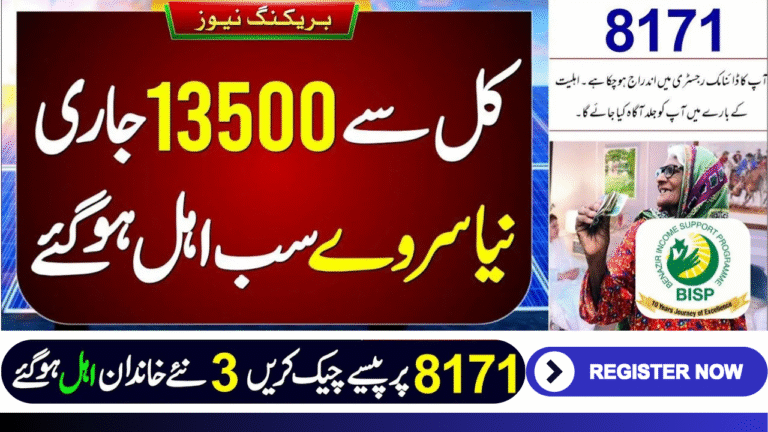
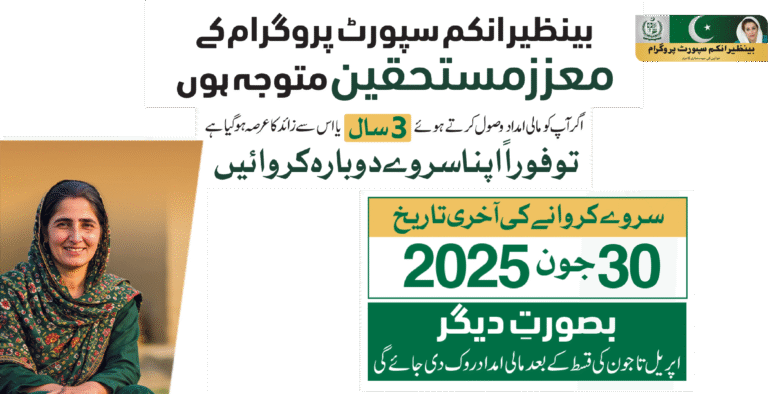
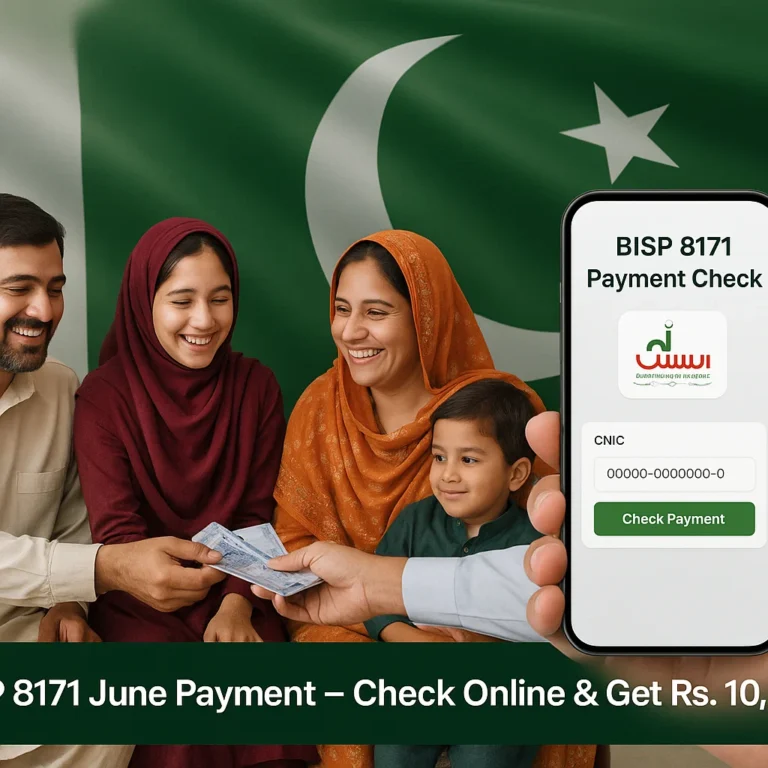
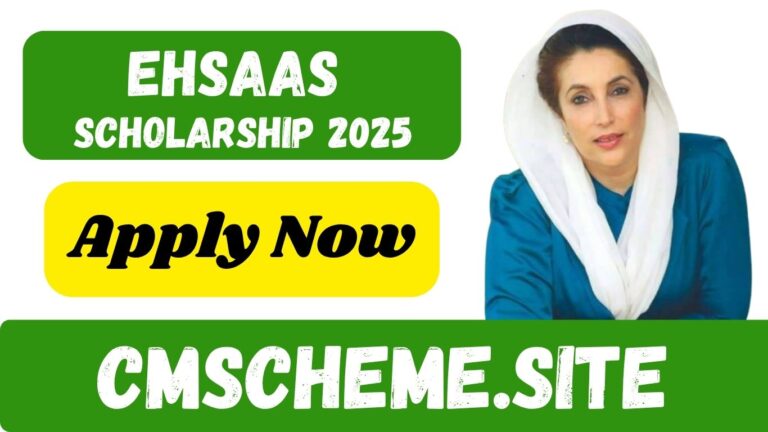
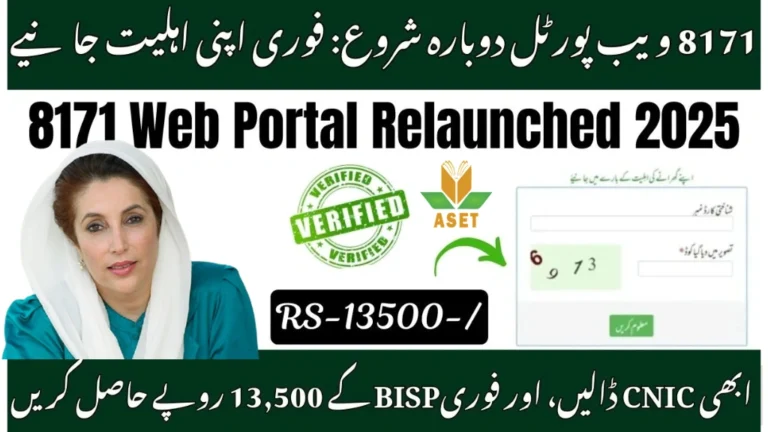
One Comment